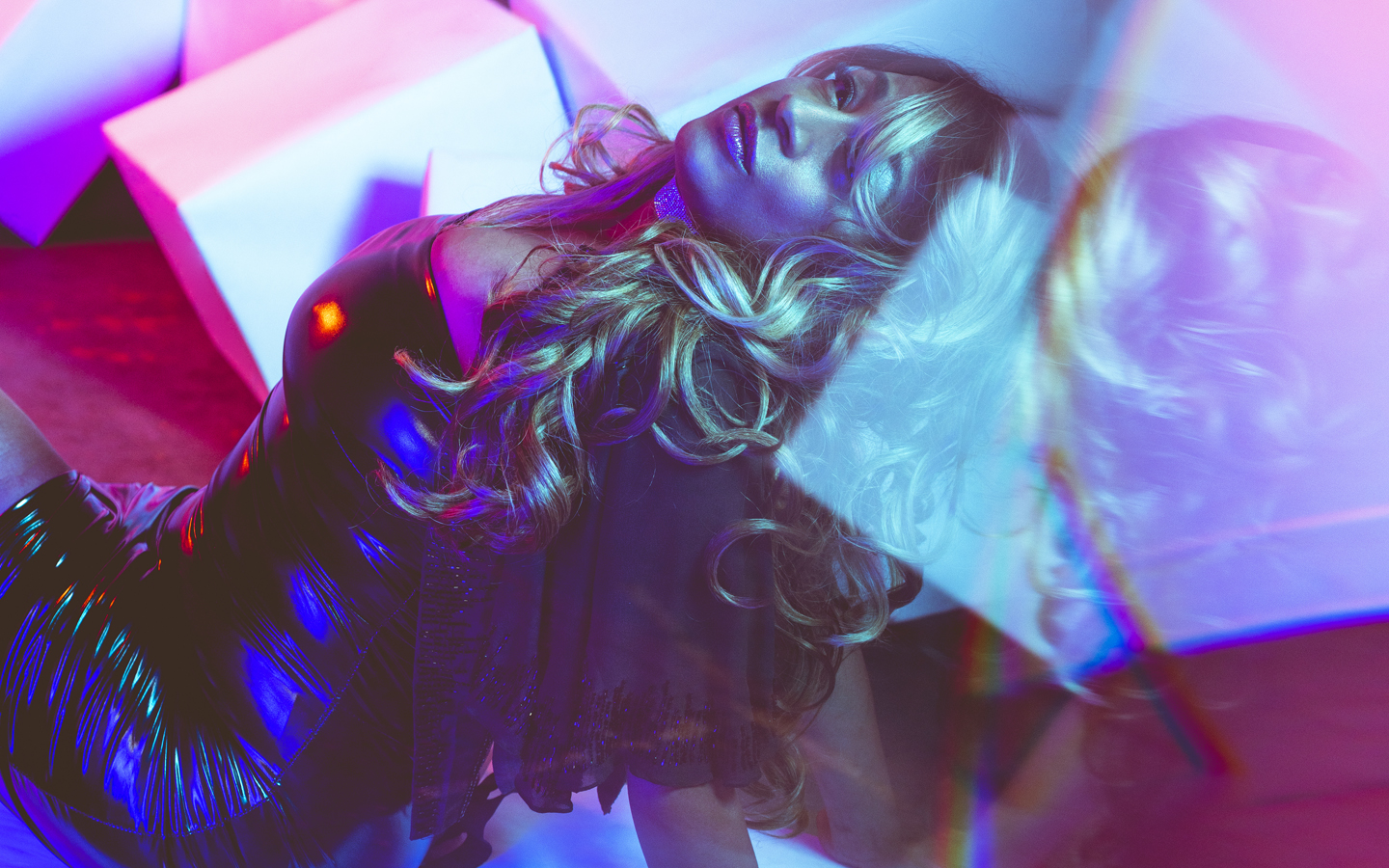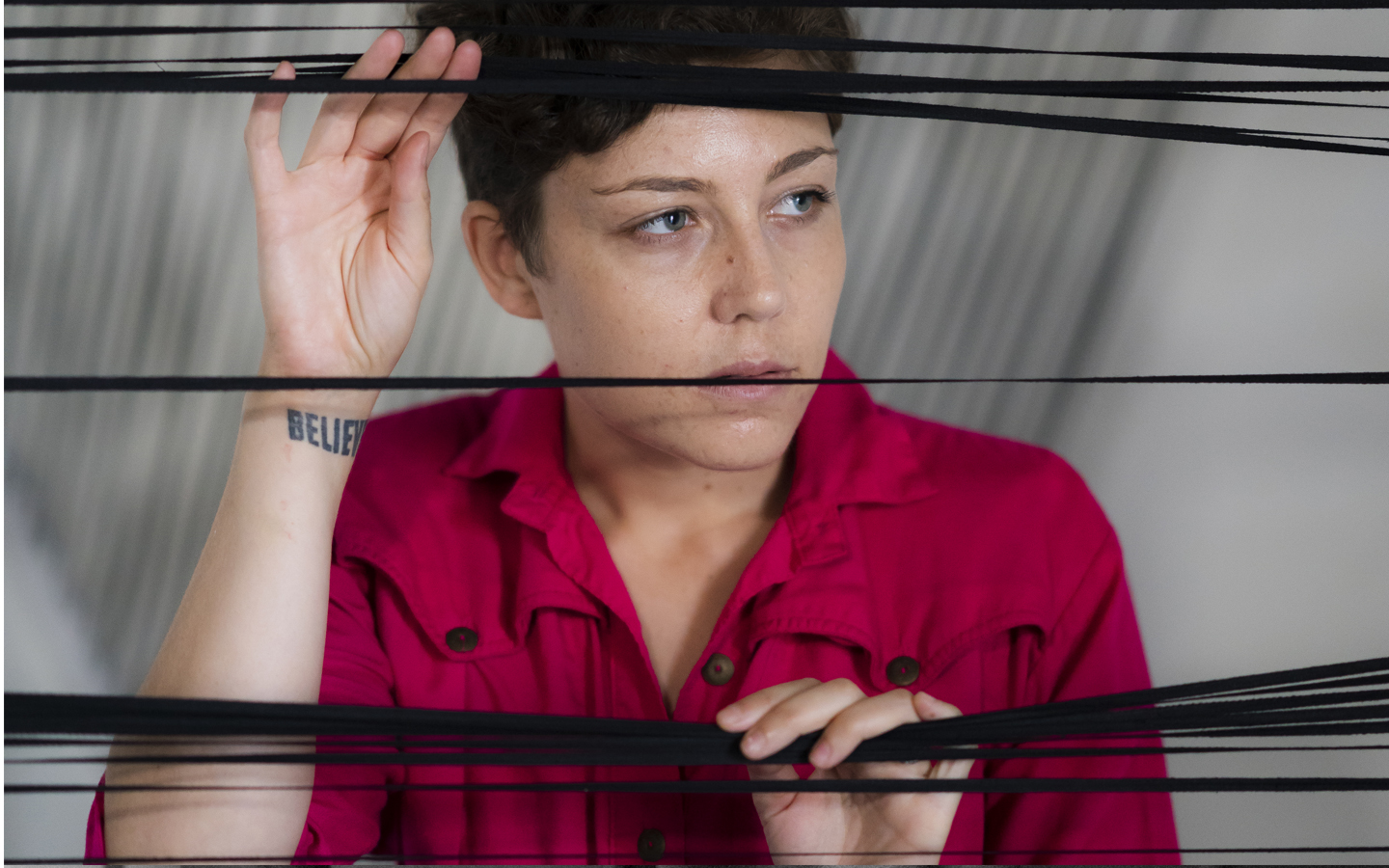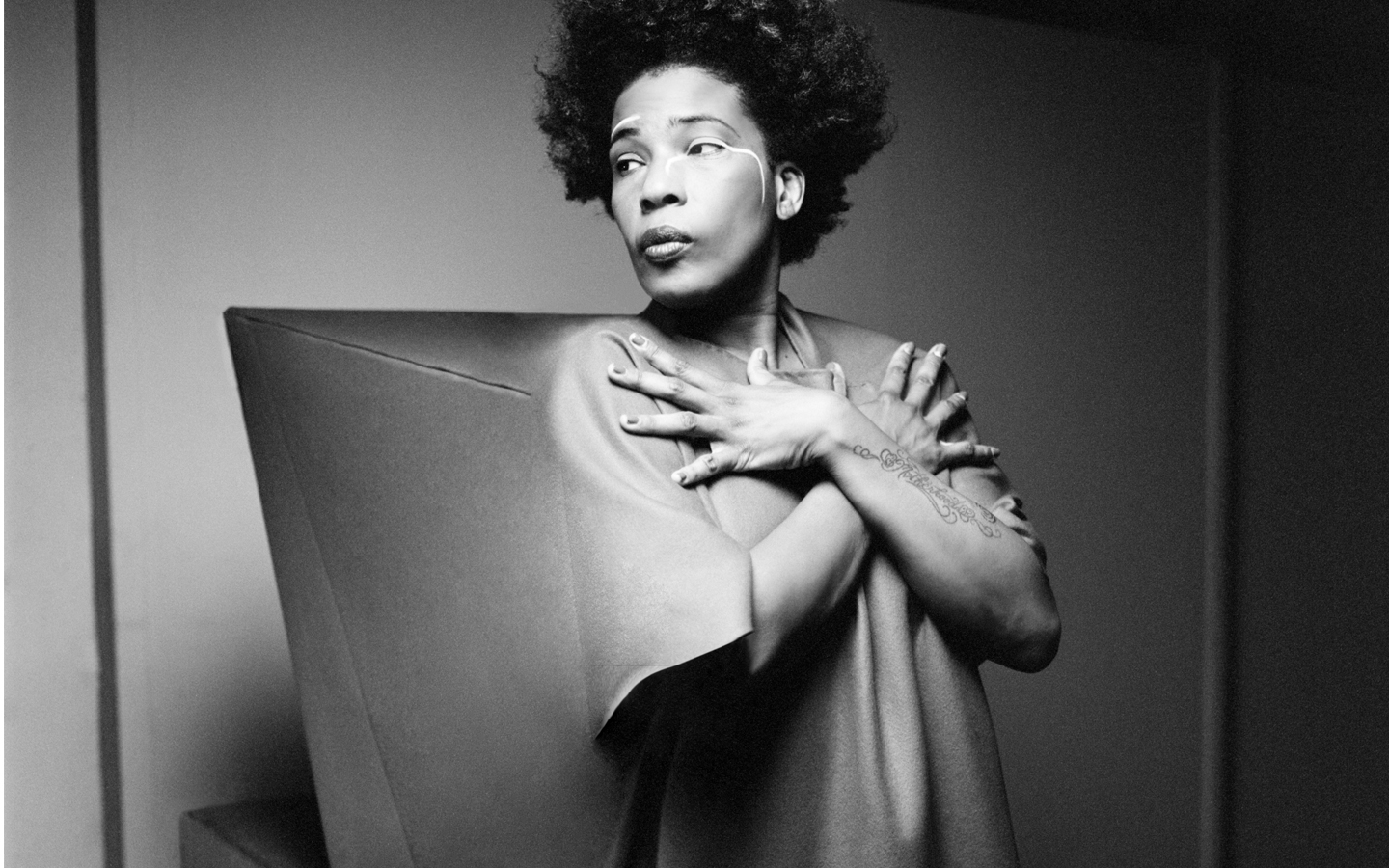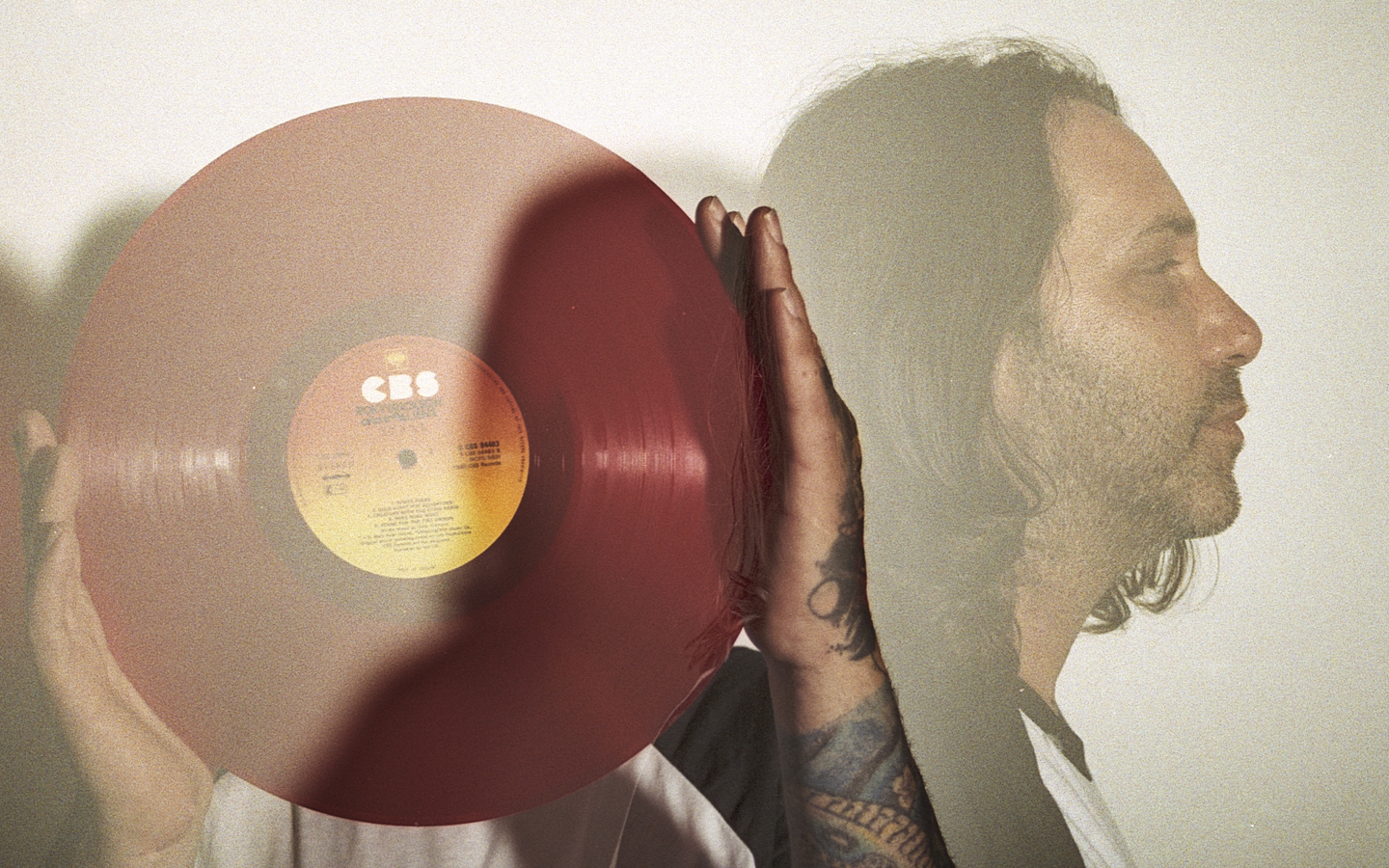
Thea Austin
TEXT ALEX KOZELA
VISUAL JENNICA MAE
Thea Austin was crying in the dark corner of a German studio when it came to her.
“I was, like, ‘God, please give me something that the people can feel,’” she said.
She needed a moment to allow herself to live with the music, alone. She asked them to loop the track, turn off the lights, and give her the space to create something from the heart.
“I put my headphones on and I just prayed and said, ‘God, I surrender to spirit.’ Nanoseconds later, I heard this melody and then the lyrics.”
“Rhythm Is A Dancer” – the lyrics soar into the night. “It’s a soul’s companion. You can feel it in the air.”
These words, and the spirituality that resides in them, were and continue to be felt everywhere. They have gone on to define not only Austin’s reality, but that of millions of others across the planet.
“I can’t tell you how many – literally – thousands of people around the world have come to me and said, ‘This is the song that defined a transformative time in my life. This is the song I danced to after I came out to my parents,’” she says. “‘This is the song that gave me the strength to just feel good about 100% being myself.’ Or ‘This was the the song that changed my mind when I felt so low and thought about taking my life.’”
In 1992, “Rhythm Is A Dancer,” the second single off of Snap!’s The Madman’s Return, topped the charts all over Europe, hit the top 5 on the U.S. Billboard Hot 100, and became the UK’s second biggest single that year, surpassed only by Whitney Houston’s “I Will Always Love You.” Having amassed over 120 million YouTube hits, “Rhythm Is A Dancer” remains one of the biggest electronic dance records of all time, and is every bit as relevant today as a liberation anthem as it was in the early 90s.
“In this world where feelings of fear, ignorance and prejudice are being stirred up again, it’s good to still have these lighthearted and feel-good songs make a difference, where it pulls people out of a state of darkness and trouble to a place of rejoicing — to dance, to lift up your hands and your voices. That’s what a lot of people are doing again.”
//
Sitting in a steamy, humid studio during a South LA summer, Austin remembers growing up in a “rhythm and blues” household in the steel mill town outside Pittsburgh, PA, being inspired and motivated by her hard-working parents and her songbird sister, Vontelle (“Tub”) as her main vocal inspiration. Austin cites her parents as her backbone, who taught her valuable life lessons, encouraging the importance of education, and especially learning how to fight for civil and women’s rights. “Growing up during the Civil Rights and Women’s Rights Movements enlightened me, made me strong and aware of my value, self-worth, and integrity. My family and these movements pushed me to do better, be better, believe in myself, and help other people.”
While performing with bands, singing at weddings, and competing in local talent shows as early as age seven, Austin confidently informed her teacher that she would become a singer and educator. She pursued both. While honing her skills as a singer/songwriter, she pursued her higher education in the fields of education and psychology, and received her Bachelor of Science degree from The University Of Pittsburgh, earning what she describes as a challenging and rewarding position as a counselor and program director for United Cerebral Palsy. She also worked as a staff writer/reporter for the international trade publication The R&B Report, and held down a full-time job as a babysitter and housekeeper at the same time. “Honest jobs and hard work build integrity, skill sets, and the character to keep on keepin’ on.”
Her journey toward “Rhythm Is A Dancer” followed a “tumultuous and glorious” time in Japan. It was glorious, despite the fact that she was abused by a promoter before booking consistent gigs, and meeting legends at Club Blue Note. There she was introduced to greats like hometown favorite George Benson, Carmen McRae, Tony Bennett, and Dizzy Gillespie, who mentored her.
Gillespie told her “‘You know, your voice is your main instrument. Take care of it,’” she says. And she took that to heart. “That’s the most important thing. Before he shared that with me, never before had I really looked at my gift – my voice – as my instrument.”
Her time in Japan was formative, introducing her to the experimentation of jazz, while giving her a platform to sing R&B, jazz, and pop music six nights a week.
“In Japan, I started really getting into sound and experimentation with my voice,” she says. “I had learned to sing a certain way in the rhythm and blues style, but with jazz, the voice and the instruments are allowed to be experimental, and mistakes and imperfections are considered some of the most beautiful parts.”
She returned to Los Angeles, but there was nothing immediately wonderful about her return. There, the “bottom fell out” for her, she relates, before she ultimately connected with the Frankfurt-based producers of Snap! They were searching for a female vocalist for their next album. They loved her instrument, and arranged for her to travel to Frankfurt, Germany to record The Madman’s Return in Offenbach.
“At that time, I was struggling in my life, and I can even hear part of the struggle in my voice,” she relates. “But I felt inspired and hopeful.” She notes the optimism of the line “lift your hands and voices,” was another central theme to the universality of the track. “I was getting freed up. When I was creating “Rhythm Is A Dancer” my soul was being freed up because I knew that money was coming in and I could feed myself, take care of myself and pay my bills! New opportunity was coming, and there was hope. Maybe that’s part of what people feel on the inside when they hear it. Maybe that’s what their body interprets, on a very subatomic level — freedom and hope”.
The single took off, rocketing up charts and penetrating clubs worldwide. Rapper Turbo B, whose bars feature on the record, invited Austin on a whirlwind international tour that included opening for Michael Jackson’s HBO tour in Romania.
“I didn’t always track the history of “Rhythm Is A Dancer,” she reveals. “I was just living in the present moment, touring and enjoying the experience. I’m very humbled by the success of my song and very grateful.”
“I think back to when I went to South Africa and some people were saying to me, ‘When apartheid ended, they were constantly playing “Rhythm Is A Dancer.” Even though some people might look at it as a lighthearted dance song, it’s one of our freedom songs,’” she recalls. “And when I heard that from five different people in different cities, that blew me away. Here we are, again facing injustice of human rights and civil rights and people fighting for their right to be who they are.”
//
The song’s music video was filmed at the Kennedy Space Center at Cape Canaveral. The video depicts Austin performing with Turbo B in a dark but glitzy vision of the future, or perhaps the “now.” It reflects the song’s lyrics and production – an intense, nearly apocalyptic feel presented in glowing euphoria.
They glisten — a positive message amidst the dystopia.
“Although ‘Rhythm Is A Dancer’ is a lighthearted pop song, there are some dark tones” says Austin. “I believe that’s part of the pull on the soul with this song, and maybe why so many people find themselves lured into it. There is the presence of light and dark in the song, and there is praise in the lyrics. It brings you to a place of higher feeling.”
Today, Austin can be seen on Netflix in the inspiring documentary film Jewel’s Catch One, in which her mentor and dear friend Dr. Jewel Thais-Williams’ life of activism and great service is captured.
As Austin continues on her life journey of good music and good service, she credits her heroes: her mother and father, Loretta and Arter Austin; Thais-Williams, the former owner of the legendary Catch One nightclub/The Village Health Foundation; and her therapist, LGBTQ activist Dr. Don Kilhefner, for nurturing and educating her into a future of high purpose.
Austin has taken up the guitar, and is currently in the studio self-producing. And she is touring with such outstanding ‘90’s artists as Salt-N-Pepa, TLC, Naughty By Nature, Coolio, Vanilla Ice, All For One, C&C Music Factory, just to name a few.
She is involved with the community through local food ministries, APLA, The Union Rescue Mission, The American Cancer Society and Bridge To Ghana ministry. She’ll soon be traveling to Ghana to inspire and educate children, a cause close to her heart.
Her new single, “Sweet”, which is produced by House Music D.J. ISSA, has entered the charts and captured hearts across the globe, and will soon be followed up with the soulful sounds of “Good Vibes.”
And no matter where she goes, the rhythm is always there by her side.
“Rhythm is certainly my companion,” she says. “I’m constantly in a rhythmic, musical flow. All of us are. From the time we’re being developed in the womb, it’s a rhythmic flow,” she attests. “From the time we are birthed into this world – the first breath outside of the mother’s womb is rhythmic. There is a rhythm to the breath of life. It’s definitive of most everything that I do. And when I’m by myself, it’s always there as my friend, as part of my soul.”
You may also like
Nicole Lexi Davis
There is something magical and ethereal about capturing a great moment in sound.
Macy Gray
Ruby will be Gray’s 10th album. “It’s high emotion, it’s intense. Your eyes go right to it.
Oren Pius of Cosmic Vinyl
Oren Pius and his cousin Eitan Kalma peddled wares in flea markets. Nearly twelve years after he fir




